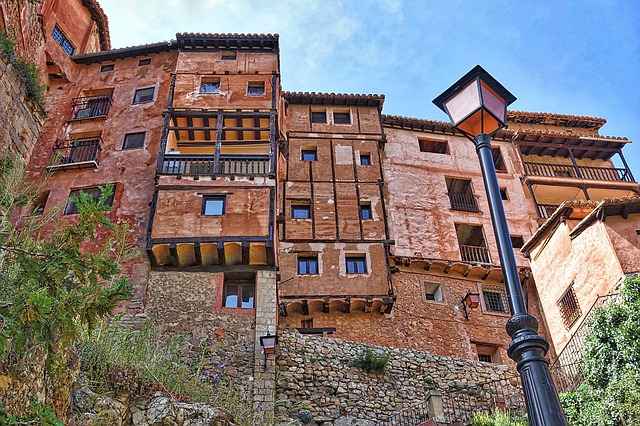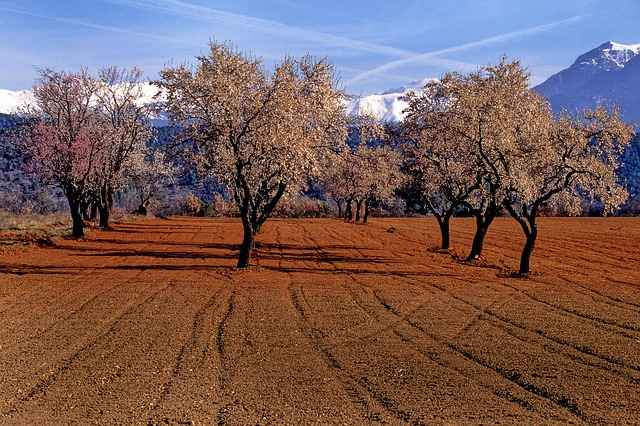Aragon - The Land of Moors
and Romans by Mark Buckingham

| The provinces of Zaragoza,
Huesca and Teruel cover an area of 47,719 km² and make up the autonomous
community in the north east of Spain called Aragon. More than half the
population of 1.2M inhabitants live in the regions capital Zaragoza (English
pronunciation: Saragossa) leaving the rest of the region quite sparsely
populated creating large deserted areas.
The region is bordered on
the south by Valencia and on the
north by France. Catalonia and the Ebro valley with its flat and fertile
lands is on the east and on the west are Castile-La
Mancha, Castile-Leon, La
Rioja and Navarre.
Great possibilities for winter
sports are offered by the mountain ranges and in summer you can explore
the almost unspoiled beauty, artisany, folklore and the celebrated gastronomy
of the region.
Animals long since extinct
in other areas of Europe can still be found in the mountainous landscapes
of this region which was one of the centres of Spanish culture in medieval
times. |


Major Attractions in
Aragon
Zaragoza:
Situated beside the Ebro River, is the region's capital - Zaragoza. The
Romans and Moors, who in their respective times dominated the region, are
depicted in paintings located in the many museums and galleries, by artists
ranging from Rubens, Rembrandt, Van Dyck, Velazquez and Goya to Renoir,
Manet and Sorolla.
Teruel:
The city's great Mudejar style monuments and buildings, which are a consequence
of a long Moorish domination, are most noteworthy. Highlights include the
cathedral with its beautiful bell towers and the churches of San Martin,
San Pedro and El Salvador. A combined theme park, Dinopolis Terual, can
be found on the outskirts of Terual - it includes a museum that focuses
on dinosaurs and has a life-size motorized model of a Tyrannosaurus Rex. |
Huesca:
Located at the base of the Pyrenees mountain range is the town of Huesca,
which offers scenery of outstanding beauty. The main annual festival in
San Lorenzo (Laurence) is held on 10 August, in honour of San Lorenzo who
was bishop of Roma and martyrized by the Romans.
| Climate of Aragon
Aragon is noted for its Mediterranean
- Continental dry climate with irregular rainfall, large temperature ranges
and strong winds, particularly along the Ebro Valley. The region also has
some of the most extremes of temperature in Spain as a result of its continental
position, far away from the effects of the Atlantic and Mediterranean.
The most consistently cold
part of the Iberian peninsular (apart from the mountains of course) is
said
to be the valley of Jiloca in Teruel, which has a record temperature low
point of -28/-30ºC occurring in Calamocha. It is not uncommon for
large areas of southern Aragon to have as many as 120 days of frost in
any given year. |

Aragonese Cuisine
Aragon's typical cuisine
includes roast lamb (especially ewes); ham (jamón) from Teruel;
olive oil from Empeltre and Arbequina and wines from Cariñena, Somontano
(Huesca), Calatayud and Campo de Borja. There are also quite a few marvellous
dishes of seafood, including several kinds of crab paste (influenced by
the superstition that crabs help prevent illness) and steamed, but quite
commonly undercooked sea fish, steamed in the saltwater they were taken
from.
A visit to Aragon is a visit
that will immerse the traveller into Spain's rich heritage and one which
will continue the tradition of this regions visits from people of other
nationalities.
Top
|



